Introduction
I have to admit I have never even seen Postcard Records, also known as a Phonocard, Phonopost and Singing Postcard. "The basic idea of a gramophone postcard is to glue a single sided miniature disc record onto a postcard and punch a center hole through both card and disc. Since the normal shellac compound used in the manufacture of disc records would be too heavy and breakable, the disc records could be made of plastic material or celluloid.". Some were created by using laminated cardboard with the track ingrained in that.
Although listings of the cards appear everywhere, not much about the publishers is known. What I have found, I have put on this page.
General History
In 1996, the EMI Group PLC. printed The Collectors Guide To 'His Master's Voice' Nipper Souvenirs, edited by Ruth Edge and Leonard Petts.Nipper was dog, incidentally from Bristol, that became the symbol of The Gramophone Company's His Master's Voice and RCA Victor's record labels.
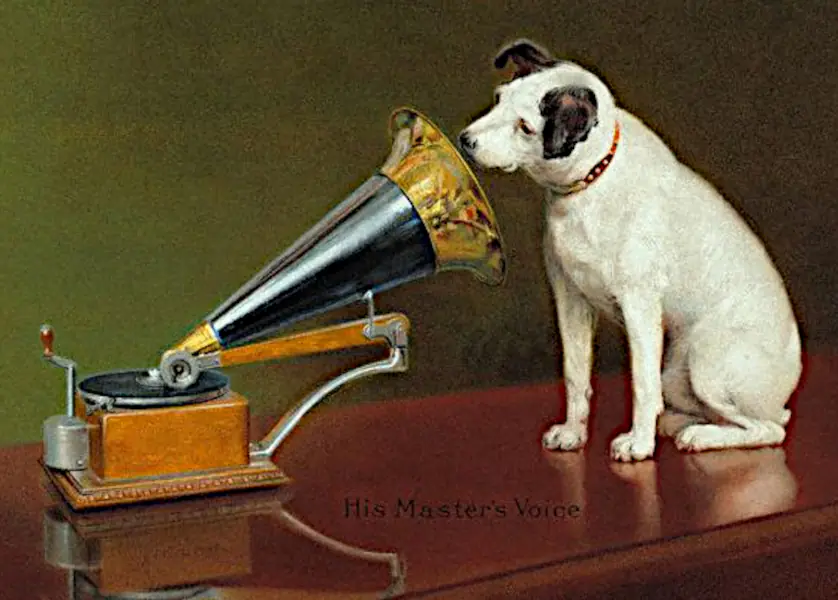
His Master's Voice - Nipper
The book is interesting because on pages 694 to 703, it gives a short history of "Gramophone Record Post Cards". It says:
Patents covering the idea of 'Talking Post Cards' were taken out as early as 1900, however, we do not know for certain when these were first made use of commercially. Theodore Birnbaum, the Managing Director of The Gramophone Company's German branch in Berlin, wrote to Barry Owen in London on 6th July 1901 enclosing an interesting Card which may well be the first Post Card to carry a recorded message on its surface. Birnbaum reports :
It consists of an ordinary picture card on which 3 or 4 lines of a phonographic record have been pressed. A sharp wooden pointer is then drawn across the lines producing spoken, words.
Alas this Card is no longer with the letter. As requested it was returned to Berlin. In doing so, Barry Owen, Managing Director of The Gramophone Company in London wrote:
It seems to me this is a very good thing and is a new idea. I do not know whether it can be made practical but if it can be it certainly would be worth while.
It is known that experiments to produce 'thin' records in celluloid and rubber were in progress both at the Hanover Record Pressing Plant and by Emile Berliner in the USA. On 6th June 1901, Theodore Birnbaum wrote to Barry Owen:
Did Hanover send you copies of the latest Celluloid Records and did you notice the extra drag on the needle point caused by the elasticity of this material?
Meanwhile, Emile Berliner was writing from America (in German) to his brother Joseph, Manager of the Hanover Pressing Plant, and mentioned:
Please note that after a number of experiments last week I have discovered a method of pressing very thin hard rubber records using very slight pressure formally a very strong pressure was necessary - and this material is lighter unbreakable and remains flat, does not become scratchy with use, the tone appearing also fuller through the elasticity of the wave walls.
It appears that this idea originated from Joseph Sanders. We have traced no further information on this project until 1904 when, in October of that year, 'The Talking Machine News' drew attention to an announcement in 'The Daily Mail':
A striking novelty in picture post cards is about to be placed on the market by a French syndicate. To an ordinary pictorial card is affixed a gelatine disc, on which is impressed a gramophone record. The post card can be placed on an ordinary machine and played in the usual way.
Concluding its comments the magazine noted:
The musical post card, may we be allowed to add, however new it may be to France, is not new over here, although we believe it has never been exploited to any extent. We have before us as we write a gramophone record impressed on a picture post card. In this case a thin sheet of celluloid has been used, with a view printed on it by the collotype process. The record being stamped on the centre .... We may add that in order to play the post card record, it should be placed on the top of an ordinary record and then screwed down with the cap.
The French Gramophone Record Post Cards were probably made by Emile Bessiere who had visited the G & T's London Office on 9th September 1904. The event was noted by S. W. Dixon:
He tried to sell me some post cards with sound waves on a film for a disc machine. He further told me that he would come again on Monday and show me disc records by all the leading French artistes, and that in the course of a week or two he would have made a contract with Alvarez to sing exclusively for his company.
It seems likely that the Record Post Cards in the hands of the Editor of 'The Talking Machine News' were those being produced at the G & T's Hanover factory. By October 1904 some successful experiments to produce a Gramophone Record Post Card had been made.
Birnbaum, by now the Managing Director of The Gramophone Company in London, wrote to Hanover on 7th October 1904:
We are contemplating bringing out a Gramophone Post Card, and send you today two matrices for the purpose of experiment. The samples which we made here were on ordinary post cards coated with shellac, and post cards on which a very thin sheet of transparent celluloid had been attached. In the latter case an ordinary pictorial post card was taken and celluloid pasted over the picture so that the appearance of the card was in no way interfered with.
Hanover was urged to press on with the experiments as early as possible since London would 'like to put something of this kind out for our dealers in time for the Christmas trade'.
Clearly these proposed Post Cards were expected to have a very short life as Birnbaum noted:
Of course it would be cheaper if a thin coat of varnish was used, as it would be quite sufficient for the purpose. It is only necessary for the records to reproduce once or twice. It is necessary that a hole should be punched through the centre of the card.
The Patents of 1900 had now expired and so The Gramophone Company was free to place its own Cards on to the market if it wished to do so. The idea of a Post Card Record was also being extended to producing full Cardboard Records which would be sold at a very low price to meet the competition of other companies such as 'Nicole' which were now springing up.
Writing to London Head Office on 21st November 1904, Alfred Clark, then head of the Paris branch, noted:
Whilst in Hanover with Mr Birnbaum, I was shown a sample post card on which was printed a small Gramophone Record, and was told that London Office had ordered a certain quantity with the idea of sending them out just before Christmas. I arranged to have some made for Paris, and on my return had the records in question recorded at our Laboratory and the matrixes sent to Hanover.
Clark had ordered 2,500 Cards from one matrix and 500 from the other. London confirmed the order with Hanover, authorizing them to execute it 'with the utmost promptitude'. Hanover confirmed on 26th November 1904 that 'we are quite ready to forward to all our different Branches Post Cards for Xmas, as long as we receive the necessary matrices at once'.
This letter indicates that production on a fairly large scale had been planned although we have been unable to confirm that manufacture actually took place. In addition we have no knowledge of the pictorial designs used on the Cards or of the content of the recordings. Since Post Cards carrying representations of the 'His Master's Voice' painting are known to have been reproduced since 1900, there is a possibility - if not a probability - that some of the Gramophone Record Post Cards could have featured Nipper in some way.
We have not traced any advertised sale of these Cards, however in January 1906 an editorial note in the 'Talking Machine News', following up a reader's suggestion for 'Talking Christmas Cards' commented:
Some two or three years back The Gramophone & Typewriter Ltd., sent round a greetings of the kind to their dealers. It contained, if our memory serves us, in addition to the compliments of the season, a Xmas selection and was exceedingly good.
Perhaps this was the sole use of these 1904 G & T 'Talking Post Cards', however it does not, of course rule out the possibility that some were sold by dealers to the general public.
Interest in the project must have continued as we know that Will Gaisberg made two special 3 inch diameter records for the Dutch branch in January 1905, indicating that they were for use on Post Cards.
By March 1905 M. Etlinger & Co. of Long Lane, London EC was producing Recorded Cards known as "Discal Post Cards", which he advertised with the statement 'This disc (Card) bears on its face a minute Gramophone Record'. The first series consisted of twenty-four different selections which, amongst others, included orchestral recordings of 'God Save The King', 'The Washington Post' and 'Valse Bleue' also vocals which featured 'Home Sweet Home', 'Auld Lang Syne' and 'Stop Your Tickling Jock'.
A review of the Cards in the 'Talking Machine News' stated:
Judging from the sample sent us the late Dan Leno's well-known song 'Buying a House'- which is delightfully clear - the Etlinger disc post cards should command a large and ready sale. Judged as a picture post card, for there is a picture on the card, as well as a disc too, the colours are well blended and well printed. Etlinger's are shortly placing on the market a small and cheap machine for playing the cards, which, however, are available for use on any type of disc machine which has a clamp screw.
A reproduction of an 'Etlinger' advertisement for this first issue appears in illustration (1555). This reveals that the 'Discal' Post Cards sold for 6d (2p) each.
The 'Talking Machine News' also reported an article 'Echoes of Science' which had appeared in 'The Globe':
The phonocard is a means of transmitting the human voice by post. It is prepared in the same way as an ordinary phonographic record. A substance known as sonorine is spread on a sheet of cardboard and on this the record is made by speaking into the phonograph. The sounds are inscribed in a spiral beginning on the outside of the card and finishing in the centre. Some seventy or eighty words can thus be inscribed on a post card. The receiver of the card has merely to put it onto a phonograph, and listen to the voice of the sender.
The writer of the piece seems to have confused the workings of a 'Phonograph' (a cylinder machine) and a 'Gramophone', a disc instrument.
The Hanover factory were still working on their Gramophone Record Post Cards in June 1907. They were now using a process described as 'Schonecker's German Application for Post Cards containing Gramophone Records'. We have no further information on these and do not know whether they actually reached the market.
That same year (1907) a 'Novelty in Post Cards' was announced. Described as 'Graphonic Picture Post Cards' they were reported to present coloured pictures representing various kinds of records played on a variety of instruments. The repertoire was said to be varied - songs, bands (including marches, dances, descriptive scenes and classical pieces), imitations of birds and animals as well as other novelty subjects.
'The Sound Wave' and 'Talking Machine Record' reported that:
Pictures of the artistes in character will also be given. (The one of Mr Gus Elen is already issued). Disc machines with direct and tone-arm, as well as phonographs will be illustrated.
From this information one is tempted to suppose that these Cards would have carried a recording on their surface, however, this seems not to be the case.
'The Sound Wave' writing of the project mentions:
No expense is spared to make these cards as unique in quality as they are in nature, for they are printed in colours by the costly three-colour process, and not by cheap lithography. It is to be hoped that loyal support will be given to this enterprise by all interested in talking machines, so that this hobby may be represented by a choice picture gallery in miniature. The cards should find a ready sale at the retail price of one penny each throughout the whole year ... they should invite new customers because of their attractive appearance, and should increase the sale of the records depicted by arousing curiosity and interest.
The retail price of Id for each Card would almost certainly rule out the possibility of these being Gramophone Record Post Cards. However, they seem to be a most interesting series and of considerable interest to Gramophonists.
At the beginning of 1959 A. Chahine & Fils, of Beyreuth, local Agents for EMI in the Lebanon, were negotiating with the general commissioner of the Lebanese Tourist Board about the manufacture of Record Post Cards incorporating views of the Lebanon and recordings from the EMI Lebanese record catalogue. It was proposed that these Cards would contain up to two and a half minutes of music taken from the Parlophone 'Voix de 1'orient' LP's. The picture on the Card to be a reproduction of the original record sleeve. An initial order of around 5,000 Cards of each recording was envisaged. It seems that some interest from sources in Sweden, Germany and Italy had also been shown.
Although this idea was not officially approved it seems that some unauthorized Cards containing the 'Voix de 1'orient' recordings were issued by the firm Audiomaster S.A. Some of these were imported into the Lebanon.
Meanwhile, EMI in London were considering the idea of a Recorded Post Card with a record token on the back, or inside a folded Card. This suggestion too was rejected at the time.
Gramophone Post Cards continued to appear from time to time over the years, ending with a tremendous surge of interest in the 1950's and 1960's before they were taken over by the cheap plastic 'flexi' record.
Examples of modern Gramophone Record Post Cards from the following publishers have been seen:
Fonoscope Ltd. Bristol
Hardy Records(Mnfg) Co.Ltd. London ('The Singing Picture')
Hardy Records Overseas Ass.Co.Ltd.(Cards marked 'Made in Italy')
Melody Cards. London
Sportska Knjiga, Belgrade, Yugoslavia ('The Singing Postcard')
Raphael Tuck London (Some 40 Gramophone Post Cards were issued)
In addition Folded Cards, having either a cardboard disc, printed with a coloured design under a cellophone layer into which a record had been pressed, or a modern plastic record, placed inside have been seen published by:
Hallmark
Valentine & Sons Ltd.
and even with a CD record by
Arabesque (CD Card)
There are probably numerous others. Although we have not seen any examples of Gramophone Record Post Cards containing the image of Nipper, we feel that there is a distinct possibility that some might exist and we have therefore included the above information as a guide to any lucky collector who may just light upon one.
The earliest appearance of the talking postcard in the U.S. was a patent filed in 1905.
Among the publishers of postcard records were Ansichtskarte, Harvey Barton & Son, Bumb & Koenig, Carton Melody, Charles Products, Colorvox, Discal, Discophone, Ebonitine, Editions du Belvédère, EMI, Max Ettlinger & Co., Fonoscope, Greetaphone, Melody Card, Musical Postcard Company, Musika, Nicole, Ninophon, Orchestrola, Penguin, Phonocard, Phonoscope, Pictur Tone, Reco Card, Scotdisc, Sight 'N Sound Enterprises, Singola, Sonim, Soundcard, Supraphon, Tuck, Vistascound, Vovo, Weco, and Zonophon.
Harvey Barton & Son / Vistasound
Harvey Barton & Son were based on St. Michael's Hill, Bristol, and operated between 1885 and 1960. They were photographers who published real photo postcards of their landscape work in southwest England. Many of these cards were hand coloured. The postcards sometimes had a simple H. B. & S. printed on the back of the postcard. They also produced printed art reproductions and a set of picture postcards under the Vistasound name that could be played as 45rmp records. These were manufactured by the Hardy Record Mfg. Co. of London.

Harvey Barton & Son Vistasound logo
Vistasound - Discography - Discogs
Bumb & Koenig
The Hillandale News, the Official Journal of the City of London Phonograph and Gramophone Society Limited, published the article 'Ettlinger Discal Picture Postcards' in issue No. 231, Autumn 2000:
[In 1905] Bumb & Koenig, G.m.b.H., of Berlin, began advertising their Picture Postcards with recordings, they having been granted a patent as protection for their product.
Carton Melody
Carton Melody were based at 996 Cangallo Street in Buenos Aires, Argentina. As they used well-known songs and performers, they have been legally deposited with the Argentine Society of Authors and Composers (SADAIC).
Charles Products
Charles Products were based in Washington D.C.
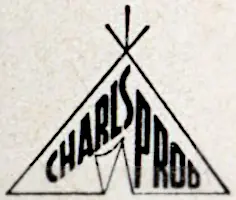
Charles Products logo
Colorvox
Colorvox was owned by the Publishing House of the Art Foundation of Hungary, who also owned Cityvox that produced coloured vinyl records. The cards were pressed by Budapest Hanglemezgyár and by VSZM, Budapest. They were also active in East Germany.
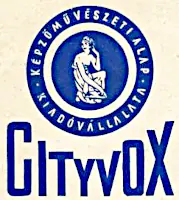
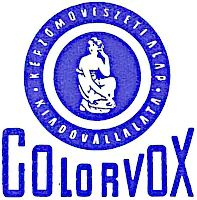
Cityvox and Colorvox logos
Colorvox - Discography - Discogs
Colorvox - Label Discography - 45Cat
Publishing House of the Art Foundation of Hungary Discography - Discogs
Max Ettlinger & Co. Ltd. / Discal and Discophone
Max Ettlinger & Company started marketing Discal postcards in March 1905. The Hillandale News, the Official Journal of the City of London Phonograph and Gramophone Society Limited, published the article 'Ettlinger Discal Picture Postcards' in issue No. 231, Autumn 2000:
Max Ettlinger, of Max Ettlinger & Co. at 10 Long Acre, LondonWC., in March 1905, was reported as having produced a recording machine costing 5s. to buy. It was made of woodand aluminium, and had taken two years to develop. It was called The Discophone'. It was a patented device upon which one placed a thin, gelatinous, adhesive disc, and, to make a recording, one spoke or otherwise performed into the Discophone as soon as it was put into motion. The resultant recording, whentaken off and stuck onto a picture postcard, could be addressed and sent through the post.
The recordings were reported to give a good volume of sound, and were said to be absolutely permanent. Apropos these diskettes, The Daily Express remarked that The Gramophone & Typewriter Ltd., for several years had been making records to affix to postcards. They had not put these on the market, however, such artefacts being considered an unsuitable product for the company's public image!
In a 'Phono Trader' advertisement of April 1905, it was stated that one Ettlinger Discophone was to be given, free, to any who ordered three gross of their picture postcards, i.e., 432 cards. It was also reported that a French Syndicate was to place similar postcards with sound recordings onto the French market.
Messrs. Ettlinger displayed their postcards at the Picture Postcard Exhibition, which was held in Earl's Court, London. A selection of twentyfour pre-recorded titles included the National Anthem, the 'Washington Post March', 'Valse Bleu', 'Home Sweet Home', Auld Lang Syne', 'Stop Yer Tickling Jock', and 'Buying a House. All were declared to be suitable for playing on any small disc machines which had a turntable disc clamping screw or device. The cards cost sixpence each. Ettlingers were still dealing at Long Acre in 1908.
In September 1905, a Mr. Edwin A.Denham, at 31 Barclay Street, New YorkCity, was importing English musical and talking postcards, manufactured in London, which carried a 3 1/3" transparent 'celluloid' disc.
Ettlinger Discal Picture Postcards - The Hillandale News, Issue No. 231, Autumn 2000
Max Ettlinger & Co. Ltd. - Metro Postcards (Internet Archive)
Max Ettlinger & Company - Undivided-back Postcards
Fonoscope
There were two companies publishing as Fonoscope, one named Fonoscope Ltd. based in Bristol, UK at 7 St. James Square, and one in Milan, Italy, which was owned by Audiomaster Italiana. The Italian Fonoscope published in Austria, Denmark, Spain, and Switzerland.
The Bristol Fonoscope was liquidated in 1964 and listed as an Investment Company, but in 1965, registered in the USA as Fonoscope Ltd. Most of the postcard records I have seen from them date from 1958.
It is not known whether Fonoscope, UK and Fonoscope, Italy, were connected in some way or two separate companies.
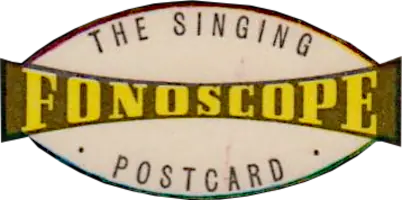
Above and below: Fononscope, Milan, Italy logos


Fononscope, Bristol, UK logo
Fonoscope Discography - 45Cat
Fonoscope Ltd. / Fonoscope - Discogs
Fonoscope Bristol - Discography - Discogs
Fonoscope Milan - Discography - Discogs
Fonoscope Spain - Discography - Discogs
Greetaphone
Greetaphone cards date from the 1920s and were published by Hall Brothers who in 1954, changed their name to Hallmark.
Greetaphone Cards - Rainer E. Lotz
Greetaphone Discography - 45Cat
Melody Cards
Melody Cards were based at 149 Royal College Street, London, NW1.

Melody Cards logo
Musical Postcard Company
Sol S. Bernstein was born in Stockport, England, in 1902, Bernstein came to America with his family at age 11, settling in Chicago. He worked as a bookkeeper and salesman for a paper products company in his younger years. He created the Musical Postcard Company, Inc., around 1958 or 1959.
The company had offices at different locations at different times, 630 W. Adams Street; 5776 N. Lincoln Ave.; but the main one seems to have been at 415 N. Dearborn St.
Musical Postcard Company - Made in Chicago Museum
Musical Postcard Company Discography - Discogs
Musika
The Musika cards were printed in Germany for export to the USA.
Musika Tonpostkarten - Rainer E. Lotz
Nicole
Nicole Records were producing laminated cardboard records around 1904 to 1908.
Ninophon
The Ninophon company was a small publisher from Munich/Nuremberg that produced cheap postcard versions of hit songs in the late 1950s.
Reco Card
Reco Card is a newer company that seems to have been active in the 1970s and 1980s.
Sonim
Sonim was a French publisher.
Tuck Gramophone Postcards
Raphael Tuck starting publishing postcards in London, in 1871. In 1929, the company started publishing Gramophone Record Postcards. 3" in size, these discs play for one minute and cost 3d each. The company appear to have used unpopular sries of postcards they had already printed as the recordings were stuck to the front of them. As Tuck used music already in the public domain they did not have to spend money on rights permissions in the production of the postcards.Tuck Gramophone Postcards manufactured in the U.S. were made from Durium, a type of synthetic resin, that was heat and water resistant. This synthetic resin was developed in 1929 by Professor Hal T. Beans of Columbia University. Professor Beans, along with several colleagues, began experimenting with the development of a substance 'in the search for an unbreakable phonograph record.' In a New York Times article announcing Professor Beans' new substance, he stated that Durium was a liquid that when subjected to heat becomes 'a insoluble, infusible solid which combines hardness and flexibility to a remarkable degree.' Durium was an ideal material to use for the Tuck Gramophone Postcards given their flexibility and durability. In addition, since the substance hardened quickly, phonograph disks could be stamped in large numbers and at a lower cost.
In an article from the Scientific American, the Durium record making process is described as:
The Durium phonograph record consists of a coating of only six or eight thousandths of an inch of Durium upon a heavy fiber paper. This paper is impregnated with Durium, passed through a drying room, cut into workable sections, pressed rapidly through a stamping machine, and finally printed with titles in another machine.
The Talking Postcard - Mary Jackson, Moving Image Archiving and Preservation, New York University
Tuck Gramophone Postcards - Rainer E. Lotz website
Tuck Gramophone Postcard Discography - Rainer E. Lotz website
Weco
Weco was a German company active in the 1930s.
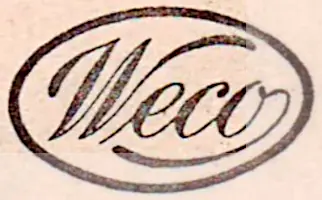
Weco logo
Zonophon
The Hillandale News, the Official Journal of the City of London Phonograph and Gramophone Society Limited, published the article 'Ettlinger Discal Picture Postcards' in issue No. 231, Autumn 2000:Zonophon G.m.b.H., of Berlin, Deutsche Grammophon's agency for the International Zonophone Company's products, began advertising talking and singing postcards in the June 4 th, 1905 edition of 'Phonographische Zeitschriff'. In the following edition of June 11th, 1905, a series of 6 Postkarten Schallplatte of 12 cards selling at 3 marks, were being advertised by the Berlin agency, known as M. Taubert & Co.
Ettlinger Discal Picture Postcards - The Hillandale News, Issue No. 231, Autumn 2000
Sources & Resources
The best sources of information I can find about them are on the excellent Rainer E. Lotz website on the Phonocards & Phonopost page, and the Vinyl Postcards page of the Museu de la Música, Barcelona site.
Cardboard Records - Internet Museum of Flexi/Cardboard/Oddity Records - A discography of various publishers
Ettlinger Discal Picture Postcards - The Hillandale News, Issue No. 231, Autumn 2000
German Flexi-disc Sound Cards - The Afterword
Gramaphones - Melody Man
Internet Museum of Flexi/Cardboard/Oddity Records
Phonocards & Phonoposts
Postcard Novelties
Postcard Records - A playlist of postcard records I found on YouTube
Postcard Records - Jacob Whittaker's collection on Flickr
The Collectors Guide To 'His Master's Voice' Nipper Souvenirs - EMI
The Talking Postcard - Mary Jackson, Moving Image Archiving and Preservation, New York University
Vinyl Postcards
Jacob Whittaker's collection of Postcard Records on YouTube